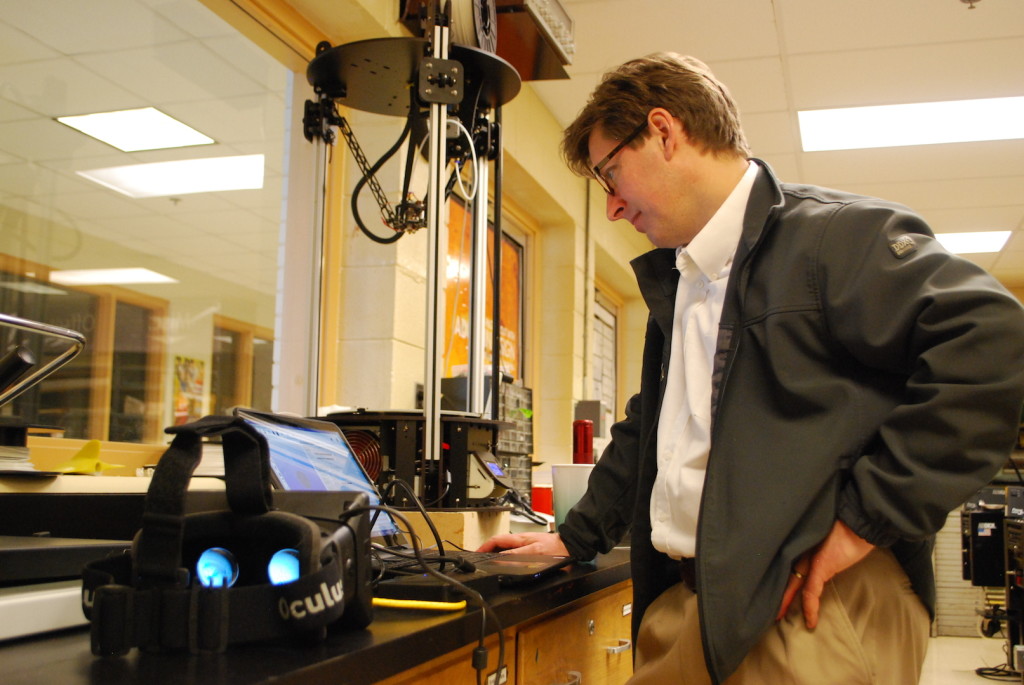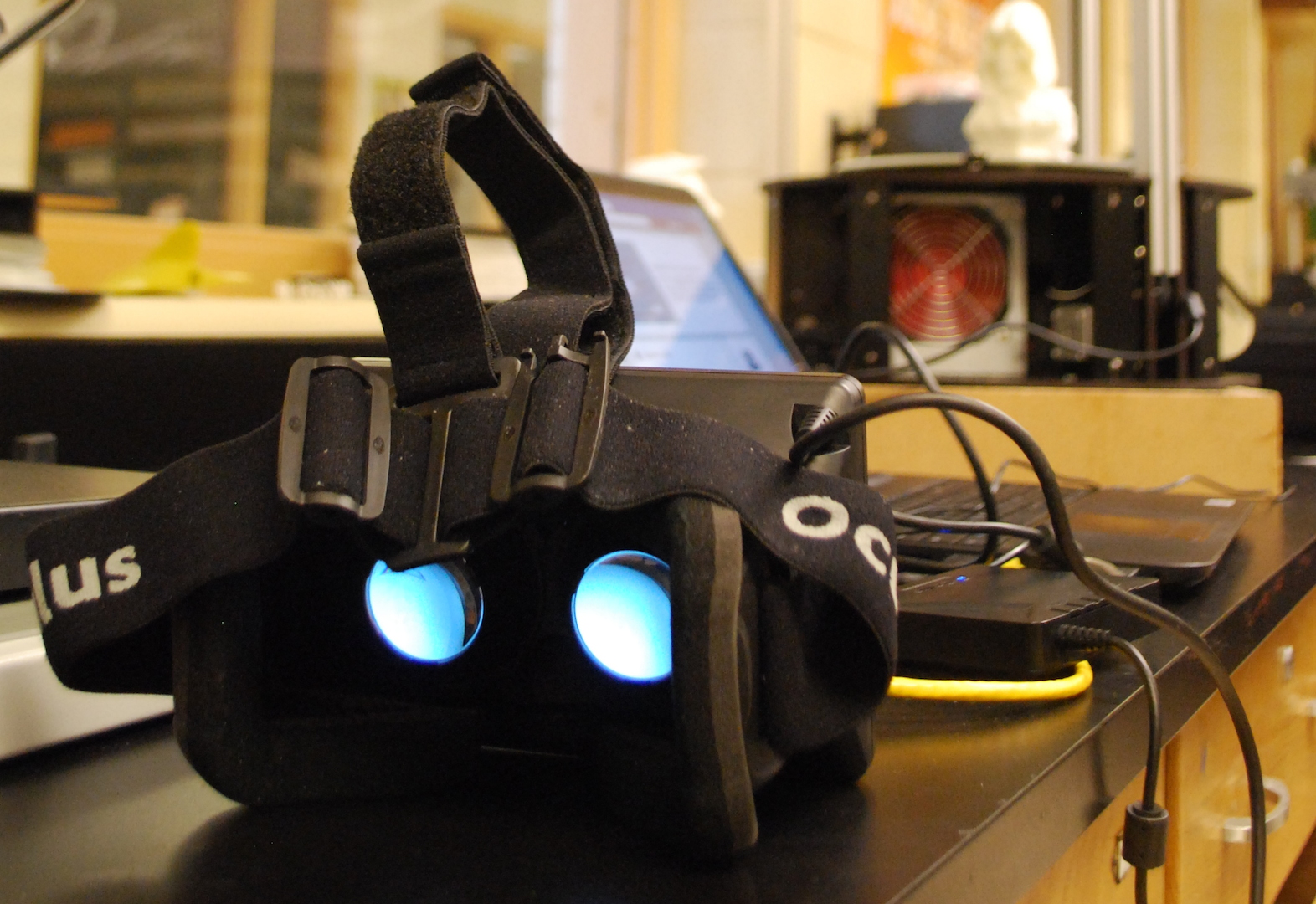Innovative Professor Brings 3D Technology to ICC

EAST PEORIA — While three dimensional (3D) technologies are often used for entertainment, one ICC professor has brought cutting-edge 3D equipment to campus to help his students better prepare for their future careers.
3D can refer to many different types of experiences, and in this case it means taking a student’s creative idea from a computer and allowing them to see it in 3D and even “print” it in the form of a tangible object.
John Baggett, professor and coordinator of graphic communications at ICC, is the person behind the influx of technology. He has made it a point to bring his graphic communication students opportunities to use the latest methods from industry so they will be prepared for the modern job market.
Baggett has been interested in technology for years, but it wasn’t until last summer that he placed the orders for this equipment.
The first item to arrive was a Rostock Max 3D printer. It is nothing like a common computer printer; in fact, it doesn’t use paper at all and looks a bit like something from an arcade.
At a cost of $1000, the Rostock Max converts 3D computer files from computer aided design software, into actual objects by melting plastics and laying them down in layers. It “prints” like a bricklayer builds a house; it starts with a base layer of plastic and works up from there.
Then the second item, a $1500 pair of Oculus Rift goggles, arrived last December. While the printer is cutting-edge, the Oculus goggles are definitely something students will not forget.
These “goggles” are actually a virtual reality headset that permits the wearer to “see” as if they are in a computer- generated environment. With two glass lenses, one for each eye, the headset gives the wearer an immersive 110-degree field of vision within the virtual environment.

Once you put the headset on, it tracks your head’s position and movements and changes your simulated view accordingly. You can literally turn and tilt your head to “look around” the virtual environment.
While the headset could be used for entertainment purposes, Baggett plans to use it to allow students to closely examine their 3D computer creations.
“The first person shooter, yeah, it’s okay, but I am more interested in the educational use of it,” said Baggett.
All of this equipment is housed in the second-floor printing labs in the Agriculture and Industrial Technology (AIT) Building on the East Peoria Campus, and these investments are steps in Baggett’s plan to create a new degree program at ICC called 3D Animation and Visualization.

